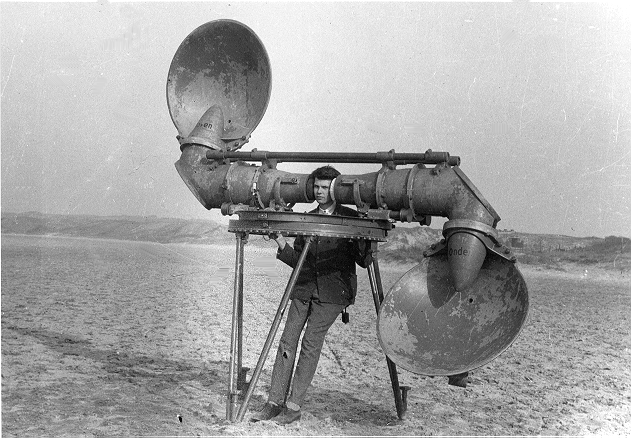Daily Image
03-07-2008Our Core Business
| Submitter: | Jan Noordam |
| Description: | When I spotted this image on the door of Ian Heywood in Oxford, I could not resist it. Partly because I can gaze at it forever in silent rapture, and partly because the density of submissions of Daily Images has been a little underwhelming lately. In any case, it is a beautiful illustration of our Core Business, i.e. interferometry (and filling in time-sheets, of course). In essence, interferometry is the measurement of the phase difference between two points of an incoming wavefront. If the wavefront is due to a single point source, this phase difference and the baseline length (i.e. the separation between the two sampling points, measured in wavelengths) tell us the direction of the source. With multiple sources in the field, the combination of phase and amplitude, measured for baselines of different lengths and orientations, allows us to recover their directions and relative brightness. In mathematical terms, this process is called the Fourier Transform. Obviously, it has many applications, from radar to imaging the sky (in fact, the lenses in photo cameras and in our eyes work on the same principle). Interferometry can be done with any signal that has a wavelike nature: radio, light, sound, and even particles(!). The image above shows interferometry with sound waves. We can only speculate about its exact purpose, but somehow it looks very British. The utilized wavelength is probably smaller than the 3m baseline, i.e. the observing frequency will be greater than 100 Hz (the speed of sound in air is 300 m/s). The clever bit is the use of the human ear-brain system to "measure" the phase difference. By nature, we are very good at estimating the direction of a sound by processing the signals picked up by our two ears. We can even do this while having a "conversation" in a disco that is going at full blast, which is a feat that none of our computer algorithms can yet emulate. So, perhaps we should learn from this, and use more of our natural processing capability in LOFAR... |
| Copyright: | Ian Heywood |
| Tweet |  |
